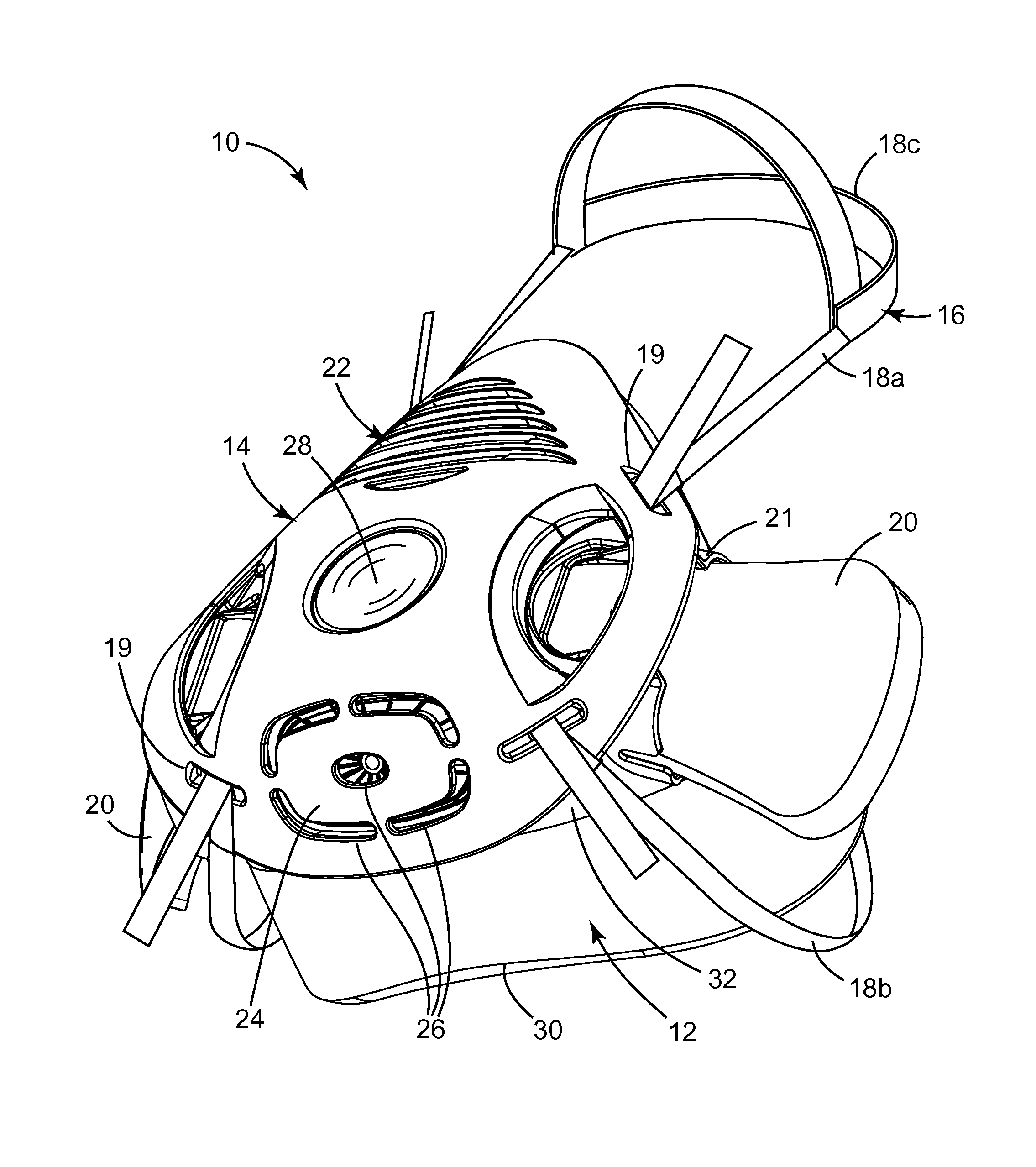Respirator Having Noncircular Centroid-Mounted Exhalation Valve
a technology of exhalation valve and respirator, which is applied in the direction of mechanical equipment, functional valve types, transportation and packaging, etc., can solve the problems of air having the opportunity to fog eyewear of users, increasing the chance of wearers removing the respirator from their face, and increasing the discomfort of wearers
- Summary
- Abstract
- Description
- Claims
- Application Information
AI Technical Summary
Benefits of technology
Problems solved by technology
Method used
Image
Examples
examples
Flap Deflection Test
[0058]This test measures the load or force needed to lift the flexible flap from the valve seat seal surface 1 mm in height.
[0059]To carry out this test, the exhalation valve is first positioned in a test apparatus that is properly calibrated. ThreeZaber motion linear translation motion stages (model T-LSR 150 are used for 3D sample positioning. They are assembled such that the clamping fixture with the attached sample may be translated in three dimensions for sample positioning and loading via manually operated pots on each stage. The clamping fixture is fashioned to hold the valve seat. A Transducer Techniques load cell (model GS0-10) is positioned below sample in the area of interest with a static fixture and with an 0.5 mm attached flat punch. The flat punch has a diameter of 0.5 mm at the tip with a 1 mm diameter shank of length 16 mm which is attached to a threaded stud which in turn threads into the load cell. The length of the flat punch is 1.25 inches. A...
example e1
[0071]An exhalation valve that resembled the valve shown in FIGS. 2-6 was constructed. The flexible flap was molded using a Wacker Elastosil 3001-60 silicone rubber. The valve seat and its sealing surface were made from a stereolithography (SLA) process using an Accura™ 60 rapid prototype material. The flexible flap had a long axis length of 41 millimeters (mm) (20.5 mm from the centroid) and had a short axis length of 25 mm (12.5 mm from the centroid). The flexible flap was designed to stay shut under a gravity load at any orientation. The ribs were located oriented as shown in FIG. 3. The ribs extended radially from the centroid such that adjacent ribs were spaced from each other at about 24 degrees. The angular spacing was the same for each of the ribs. The continuous flap sheet that was joined to the ribs had a thickness of about 0.28 mm. In an earlier construction that lacked ribs attached to this flap sheet, the flap was found to not stay shut in all orientations under a gravi...
PUM
 Login to View More
Login to View More Abstract
Description
Claims
Application Information
 Login to View More
Login to View More - R&D
- Intellectual Property
- Life Sciences
- Materials
- Tech Scout
- Unparalleled Data Quality
- Higher Quality Content
- 60% Fewer Hallucinations
Browse by: Latest US Patents, China's latest patents, Technical Efficacy Thesaurus, Application Domain, Technology Topic, Popular Technical Reports.
© 2025 PatSnap. All rights reserved.Legal|Privacy policy|Modern Slavery Act Transparency Statement|Sitemap|About US| Contact US: help@patsnap.com



